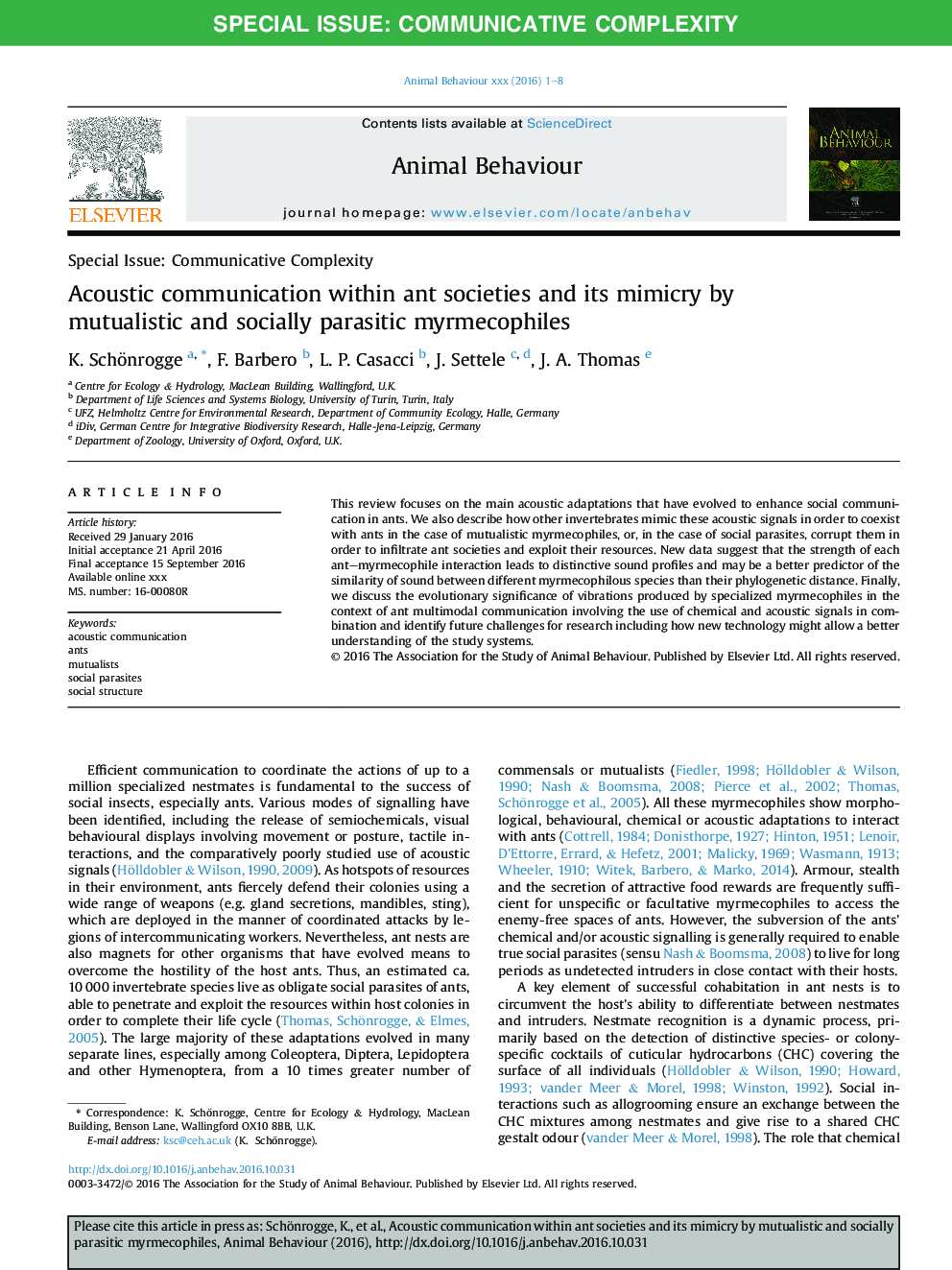| Article ID | Journal | Published Year | Pages | File Type |
|---|---|---|---|---|
| 8488815 | Animal Behaviour | 2017 | 8 Pages |
Abstract
This review focuses on the main acoustic adaptations that have evolved to enhance social communication in ants. We also describe how other invertebrates mimic these acoustic signals in order to coexist with ants in the case of mutualistic myrmecophiles, or, in the case of social parasites, corrupt them in order to infiltrate ant societies and exploit their resources. New data suggest that the strength of each ant-myrmecophile interaction leads to distinctive sound profiles and may be a better predictor of the similarity of sound between different myrmecophilous species than their phylogenetic distance. Finally, we discuss the evolutionary significance of vibrations produced by specialized myrmecophiles in the context of ant multimodal communication involving the use of chemical and acoustic signals in combination and identify future challenges for research including how new technology might allow a better understanding of the study systems.
Related Topics
Life Sciences
Agricultural and Biological Sciences
Animal Science and Zoology
Authors
K. Schönrogge, F. Barbero, L.P. Casacci, J. Settele, J.A. Thomas,
